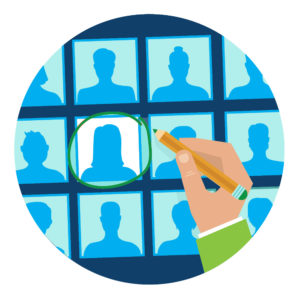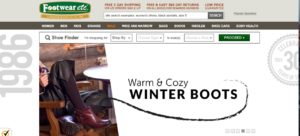
Travel back a century, and personalized experiences weren’t the exception but rather the norm. When you entered a department store, the clerk would know your name, remember recent purchases and make personalized shopping recommendations.
A few items from the most recent store shipment may have even been held for you because the clerk truly understood your preferences. Fast-forward several decades, and brands today are creating these same experiences — but they’re doing it much differently.
Retail e-commerce sales are forecasted to reach almost $1.92 trillion this year, with double-digit growth expected through 2020. At the heart of this growth are personalized experiences. Gartner predicts that by 2018, B2B companies with effective personalization strategies will outsell their competitors by 30 percent.
But where should you start? Here are five personalization tactics to leverage in your e-commerce strategy.
Personalizing Email: Going Beyond First and Last Name
People frequently receive emails from retailers that include first and last name personalization. But think about it. After reading these emails, do people really feel a personal connection with the brand? Probably not. This “first and last name” tactic was the earliest form of personalization, but marketers today are taking this one step further to achieve excellent results.
A study by Experian revealed that personalized email promotions resulted in a 29 percent open rate and a 41 percent click-thru rate when compared to emails that do not have personalization.
But it’s important to note that customers aren’t just reading and opening these emails at higher rates. They are also making purchases. In fact, 41 percent of customers report purchasing more from retailers that send them personalized emails. But where should you start?
If you want to optimize your email campaigns to drive greater open rates, click-through rates, and sales, consider segmenting your customers into carefully selected categories so that each individual receives more relevant emails.
Start by examining the behavior of each customer. For example, you could evaluate how frequently customers have purchased in the past and segment them into three different categories – one-time buyers, three-time buyers, and buyers who are no longer engaged.
Once you have these segments, you can create messaging designed to resonate with each group based on that group’s levels of engagement. This means that emails sent to frequent purchasers will be much different than emails sent to those with low engagement levels. For example, you may choose to send the disengaged customers a “we miss you” email with a special offer or other incentives to shop again.
Implementing triggers is another great way to reach and engage with customers on a more personal level. Begin by carefully tracking the behavior of customers on your website. You can set up triggers that will send off emails based on this behavior. For example, let’s say that a customer abandons her shopping cart. Within seconds, she could receive an email focused on reengagement that includes a discount if she purchases within the next 24 hours. drives her to make a purchase (more on that in a minute).
Key takeaway. Use data about your customers’ behavior to drive personalization efforts. Segment groups of customers with the same behavior to create targeted, personalized campaigns, such as email campaigns to reengage shoppers and drive sales.
Webpages: Add Relevancy to Your Pages
Most companies have a standard website that greets all customers. Maybe you’ve even evaluated the performance of your website through A/B testing. But your home page could be converting an even larger number of visitors with some simple tactics in personalization.
Footwear etc. was able to leverage past customer data to display personalized products on its home page in real time. While this may seem like a small change, they saw a 10% increase in revenue per visitor as well as a 5% increase in conversion rate and average order value (AOV).

Key takeaway: Get customers to the products they want faster by delivering personalized experiences in real time.
Ramp Up Relevancy with Real-Time Offers
Real-time personalization is one of the most innovative strategies for e-commerce companies to deploy. This technology creates a highly personalized experience for every visitor. But how does it work?
Real-time data is collected from visitors on your website through cookies and other tools. Logic rules match the visitors’ data and segment them into groups. For example, you may show a targeted pop-up to a visitor who arrives from a certain website. Here are a few more methods used to create real-time offers and experiences.
- Past content: Some companies are capturing details about content the customer has viewed in the past. In fact, 48 percent of marketers use this type of data to create real-time offers.
- Geographic location: Forty-five percent of companies use location to create contextually relevant offers.
- Time on site: Thirty-six percent of companies use this type of data to create relevant offers.
- Site navigational behavior: Thirty-five percent use data about how a customer is navigating the site to provide relevant offers.
The payoffs for personalizing content in real time are large, with nearly three-quarters of companies citing increased visitor engagement as a main benefit and 54 percent saying it improved the customer experience.
When you collect information about each customer on an individual level, a higher level of personalization is available. For example, from where did they enter your site, and how many times have they visited your site? If the customer is a repeat customer, you could send a coupon to his or her mobile device to increase loyalty and close the deal.
Key takeaway. Ask customers to buy lunch right after they’ve eaten — and they won’t buy. They aren’t hungry. But target the customers as they’re walking into the food court at a mall — and now you’ve hit the sweet spot. Achieving the highest level of personalization is all about timing. When you tap into this timing element, sales will drastically improve.
Serving Up Recommendations Like a Friend
If you’re shopping with a friend at an electronics store, he or she might call out, “Hey, didn’t you say you needed batteries? AAA batteries are down this aisle.” Providing personalized recommendations is all about acting like that friend. First and foremost, it’s about being helpful. Once you accomplish that, along with understanding what that “friend” needs most, sales will naturally follow.
Personalized recommendations are welcomed by your customers, and some even look for them on your website. In fact, 77 percent of shoppers say they find recommendations extremely useful, and nearly one-third of customers report having purchased products based on recommendations the company has shown during the sales process. Here are a few tips for creating these types of personalized experiences for your customers.
- Target customers based on pages visited. Harnessing data from pages that customers have visited allows you to include specific product recommendations based on interests. For example, you can provide suggestions with terms such as “people also viewed” or “people also bought.”
- Review previously purchased items. The items that your customers have purchased in the past may tell a story about their future needs. For example, perhaps they purchased a printer or a water purifier—something that needs refills frequently. Based on this history, you can display relevant replacement items at the precise moment of relevance.
- Serve up location-relevant content. For example, let’s say that you’re walking toward a coffee store. As you get closer, your mobile phone delivers a message and provides a coupon. As a result, you enter the store, use your coupon — and the store derives higher revenue.
Key takeaway. Personalization is about becoming your customer’s trusted adviser and friend. If you consistently serve up relevant recommendations, the customers will begin to listen more intently. As a result, customer relationships will become much stronger.
Personalization on Devices
Mobile accounts for one out of every six dollars spent online. Plus, 40 percent of consumers say they purchase more from retailers that personalize their shopping experience across all channels. As a result, when you are thinking about personalization, it’s critical to address mobile devices.
Customers expect the same shopping experience across all platforms, whether they’re interacting through your website, social media — or a mobile device. Plus, it’s important to note that over half of all searches take place on mobile devices. Real-time personalization, as discussed above, helps you push out relevant offers through the devices your customers are using in the moment.
For example, Apple uses this strategy by integrating the mobile experience with physical store locations. Upon entering the store, customers are greeted by Apple on their mobile devices and shown relevant details about products as they move through the store. Unifying all channels helps create the personalized experiences that customers today demand.
Key takeaway. Personalization can no longer happen through just one channel. It’s about creating consistent and relevant experiences across direct mail, email, desktop, mobile, and any other channel where you can reach your customers.
Personalization: Moving Forward with Greater Impact
Jeff Bezos, Founder of Amazon, said, “A company shouldn’t get addicted to being shiny, because shiny doesn’t last.” Personalization isn’t new; marketers have used it for years. The depth at which personalization is achieved, however, is rapidly changing.
Focus first and foremost on the customer. When everything is viewed through the lens of the customer, you instantly become that “trusted advisor,” and results will naturally follow. Using personalization, you create those unexpected moments of serendipity when authenticity is felt and true loyalty is achieved.
Personalization at SLI
At SLI, our machine-learning platform offers the most advanced technology available to accelerate your e-commerce and continuously delight customers at every click. SLI Enhanced Search Personalization™ instantly and dynamically personalizes the shopping experience for both your first-time visitors and loyal customers in real time.
For more tips, check out our webinar Predict More Sales with Personalization.







